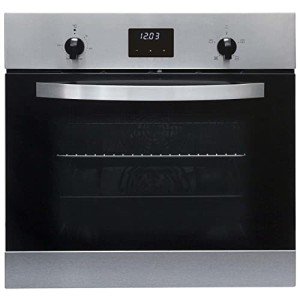How To Know If You're Set To Go After Ovens And Hobs
Understanding Ovens and Hobs: A Comprehensive Guide
Cooking has actually come a long way given that the days of open flames and rudimentary cooking approaches. Today, ovens and hobs are at the heart of modern-day cooking areas, offering versatility, effectiveness, and a variety of cooking alternatives. Whether you are a newbie cook or a skilled chef, understanding the differences, features, and functions of these home appliances is important for maximizing cooking potential. click the following internet page breaks down the numerous kinds of ovens and hobs offered on the market, their performances, and how to select the best home appliances for your kitchen.
What is an Oven?
An oven is an enclosed space designed for heating and cooking food, offering different techniques such as baking, roasting, and broiling. Ovens can be found in various types, each serving special cooking preferences and requirements.
Kinds of Ovens
Conventional Ovens:
- Use gas or electricity for heating.
- Generally include a heating component at the top and bottom.
- Ideal for basic baking tasks.
Convection Ovens:
- Use a fan to circulate hot air, promoting even cooking.
- Appropriate for baking, roasting, and reheating.
- Reduces cooking time and boosts taste.
Steam Ovens:
- Utilize steam to cook food while maintaining wetness and nutrients.
- Excellent for health-conscious cooking, such as vegetables and fish.
Microwave Ovens:
- Use electro-magnetic radiation to heat food quickly.
- Best for reheating leftovers or cooking easy meals.
Wall Ovens:
- Built into the wall, conserving space in the kitchen.
- Readily available in different configurations, including single or double ovens.
Secret Features of Ovens
- Temperature level Control: Precision heating for various baking and cooking procedures.
- Self-Cleaning Options: Some designs have self-cleaning modes that utilize high temperatures to burn food residue.
- Smart Features: Wi-Fi connection permits remote pre-heating, monitoring, and dish management by means of smart devices.
What is a Hob?
A hob is a cooking surface area, often referred to as a range or cooktop, where pots and pans is put for heating. Hobs are available in different materials, sizes, and heating methods, accommodating diverse cooking requirements.
Kinds of Hobs
Gas Hobs:
- Utilize burner for direct flame cooking.
- Deal accurate temperature level control and are favored by lots of professional chefs.
Electric Hobs:
- Use electric coils or smooth tops.
- Some models are geared up with induction innovation, providing rapid heating through electromagnetic energy.
Induction Hobs:
- Cookware needs to be made of magnetic materials.
- Really energy-efficient, offering fast heat and minimizing burn risks.
Ceramic Hobs:
- Feature a glass-ceramic surface area with heating aspects beneath.
- Easy to tidy however can be less energy-efficient than induction hobs.
Secret Features of Hobs
- Burner Configuration: Varies from 2 to 6 burners, depending upon model and size.
- Power Levels: Multiple settings permit greater precision in cooking.
- Security Features: Options like flame failure devices and kid lock settings ensure security during cooking.
Choosing the Right Oven and Hob
Selecting the best oven and hob for your kitchen involves cautious factor to consider of numerous aspects. Below is a list of questions to direct your choice procedure:
- What is your primary cooking design?
- How much kitchen area do you have?
- What is your budget?
- Do you choose gas or electric appliances?
- Are extra features like wise connectivity important to you?
Table Summary of Key Differences Between Ovens and Hobs
Function
Oven
Hob
Functions
Baking, roasting, broiling
Boiling, frying, sautéing
Cooking Method
Confined heat
Direct cooking surface
Temperature level Control
Adjustable settings
Stove settings
Types
Electric, gas, convection, microwave
Gas, electric, induction, ceramic
Cooking Capacity
Larger (can prepare multiple meals)
Smaller (focus on instant cooking)
Cleaning
Self-cleaning choices available
Normally manual cleaning needed
Upkeep Tips for Ovens and Hobs
Appropriate care and upkeep of your cooking devices extend their lifespan and efficiency. Here are important upkeep pointers:
Regular Cleaning:
- Clean the oven interior after each usage to avoid residue accumulation.
- Wipe down hob surface areas after cooking to avoid stains.
Examine Seals:
- Ensure the oven door seals are intact to maintain energy effectiveness.
- Replace damaged gaskets and seals as required.
Check Burners and Elements:
- For gas hobs, check for obstructions in burners.
- For electric hobs, check coils and surface areas for indications of wear.
FAQs
Can I use any cookware on induction hobs?
- No, induction hobs only work with magnetic pots and pans, such as cast iron or stainless steel.
What is the most energy-efficient cooking appliance?
- Induction hobs are generally the most energy-efficient choice, using less energy than conventional gas or electric designs.
How often should I clean my oven?
- It's advisable to clean your oven every couple of months, or more regularly if you utilize it often.
Can I set up an oven and hob separately?
- Yes, both home appliances can be set up separately based upon kitchen style and area.
What should I think about when installing a gas hob?
- Make sure correct ventilation and comply with local security codes. It is recommended to have a professional set up gas devices.
Comprehending the features, types, and maintenance of ovens and hobs can significantly boost your cooking experiences. Choosing the right appliances customized to your cooking style, kitchen space, and safety needs can make all the difference in attaining culinary success. By being notified about your choices, you can take pleasure in a more efficient and pleasurable cooking journey, bringing tasty meals to your table with ease.
